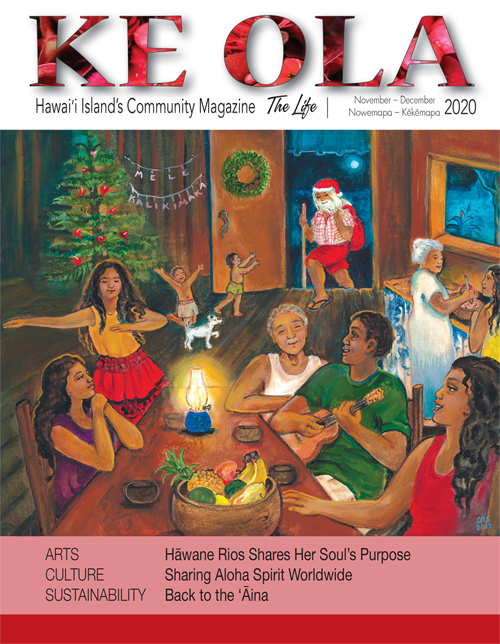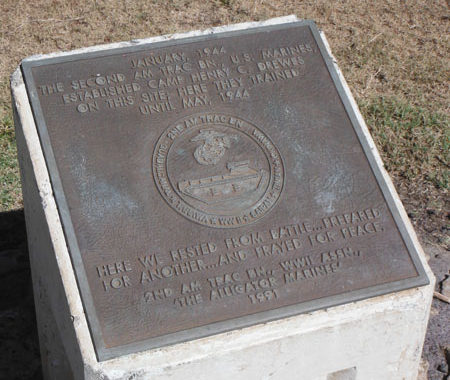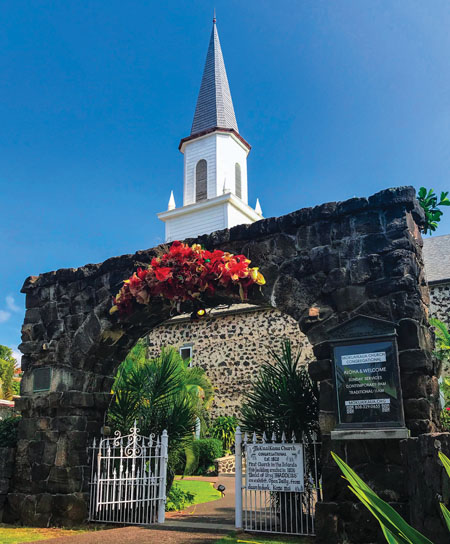
200 Years at Mokuaikaua Church: Preserving a Beacon of Faith in Kailua Village
By Fern Gavelek
The first Christian church established in the Hawaiian Islands lives on today as an active and caring fellowship called Mokuaikaua Church. Founded in 1820, the church is commemorating its 200th anniversary with a massive preservation of its landmark church building in the heart of Kailua-Kona.
Missionary Arrival Inspired by Henry ‘Opūkaha‘ia
The church was founded in 1820 by Reverend Asa Thurston and his wife Lucy who arrived that year in Kailua-Kona on the brig Thaddeus. The couple was among 14 American Protestant missionaries who sailed on a five-and-a-half-month voyage to the Hawaiian Islands to spread the Christian faith.
These missionaries were inspired by the zeal and memoirs of Henry ‘Opūkaha‘ia, one of the first native Hawaiians to become a Christian. A student at the Foreign Mission School in Connecticut, Henry showed promise in 1817 as a future evangelist for his people back in Hawai‘i. Tragically, the aspiring seminarian died of typhoid fever at the age of 26 before spreading the gospel in Hawai‘i. The Memoirs of Henry ‘Opūkaha‘ia, a small book about his life and philosophies, was published within a year of his death to benefit the mission school. The book circulated throughout New England and prompted others to go to Hawai‘i in Henry’s stead.
Establishing a Site for Worship

After arriving in Hawai‘i, the missionaries were given an area to worship by King Kamehameha II (Liholiho) at the site of today’s church. In 1823, Rev. Thurston dedicated the first wooden church and named it Mokuaikaua.
According to Place Names of Hawai‘i, the church got its name from the forest area above Kailua-Kona, where timber was sourced for construction. With the kōkua (cooperation) of 4,000 people, the church was built under the direction of Royal Governor John Kuakini.
“The roof was thatched with pandanus leaves, and, according to [missionary] William Ellis, stones from an old heiau at the same spot were used for the foundation,” says Place Names. “Queen Ka‘ahumanu was present at the dedication on December 10, 1823.”
Mokuaikaua’s congregation soon outgrew the original 60-by-30-foot building and a new wooden church with a thatched roof was erected in 1826, but it succumbed to fire. Rev. Thurston was once again tasked with building a church, sending men mauka (upland) to gather sturdy ‘ōhi‘a timber.
The church’s website describes the process: “This time, the wooden structure was joined with ‘ōhi‘a pins and huge cornerstones, repurposed from existing heiau…Kona’s upland forests were scoured for the roof’s 50-foot spanning beams. Coral, dragged from the ocean floor and burned for its lime, supplied mortar for the walls of the church, which measured 120 by 48 feet. Building construction merged the expertise of native Hawaiians and foreign workers. The new sanctuary was dedicated on February 4, 1837, and has lasted to this day.”

Nationally Recognized Landmark
Located on the mauka side of Ali‘i Drive, the church is directly across from Hulihe‘e Palace, which was also built by Governor Kuakini. Similarly constructed of lava rock and coral lime mortar in 1838, the palace had the same original exterior as Mokuaikaua before it was stuccoed in the 1880s by King Kalākaua.
Mokuaikaua underwent major repairs in 1865 and 1937. In 1910, a memorial arch was placed at the entrance of the church grounds to commemorate the arrival of the first missionaries. The 112-foot steeple, designed by renowned Honolulu architect Charles Dickey, was added in 1926. The New England-style steeple stands sentinel today over historic Kailua Village and is a reminder of the enthusiastic efforts of the missionaries and their Hawaiian converts.
In addition to being the first founded church in the Hawai‘i Kingdom, the iconic building was added to the National Register of Historic Places in 1978. In 2014, it was named one of America’s 11th Most Endangered Historic Sites by the National Trust for Historic Preservation.
Termite Inspection Signals Structural Building Problems
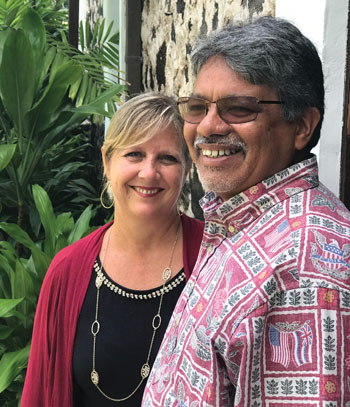
Kahu (Reverend) David de Carvalho is the 31st pastor of Mokuaikaua Congregational Church and has been at the helm since 2011. He came to the Kona church after serving as pastor nine years at Kalāhikiola Church in Hāwī. Kalāhikiola is a sister church to Mokuaikaua; it was founded by the same family of missionaries.
Kahu David says a routine termite inspection in 2013 alerted the church board to critical problems with the building.
“We knew we had termites and were seeking bids,” describes Kahu David. “A termite inspector said termites were the least of our problem.” The contractor recommended the church consult with a structural engineer about a variety of issues.
The church board of trustees called in the same structural engineer who examined the building after Hawai‘iʻs 2006 6.7 magnitude earthquake. “In addition to termites, we learned there were numerous problems that needed to be addressed and so the board decided to come up with a building preservation plan,” he details.
Congregation and Miracles Push Project
Kahu explains that as a congregational church, “The congregation as a whole is the force that leads.” Decision-making is by vote and leadership is by the majority. As such, Kahu says a collective action plan was formed and trustees and members with a building construction background got involved to facilitate it. That included David Ross, a civil engineer, and Mike Franke, an architect.
Kahu explains: “I saw the need and called attention to the congregation, telling them, ‘We are the generation responsible for this landmark.’ And by the grace of God these people appeared to help. They embraced the project and donated so much free time.”
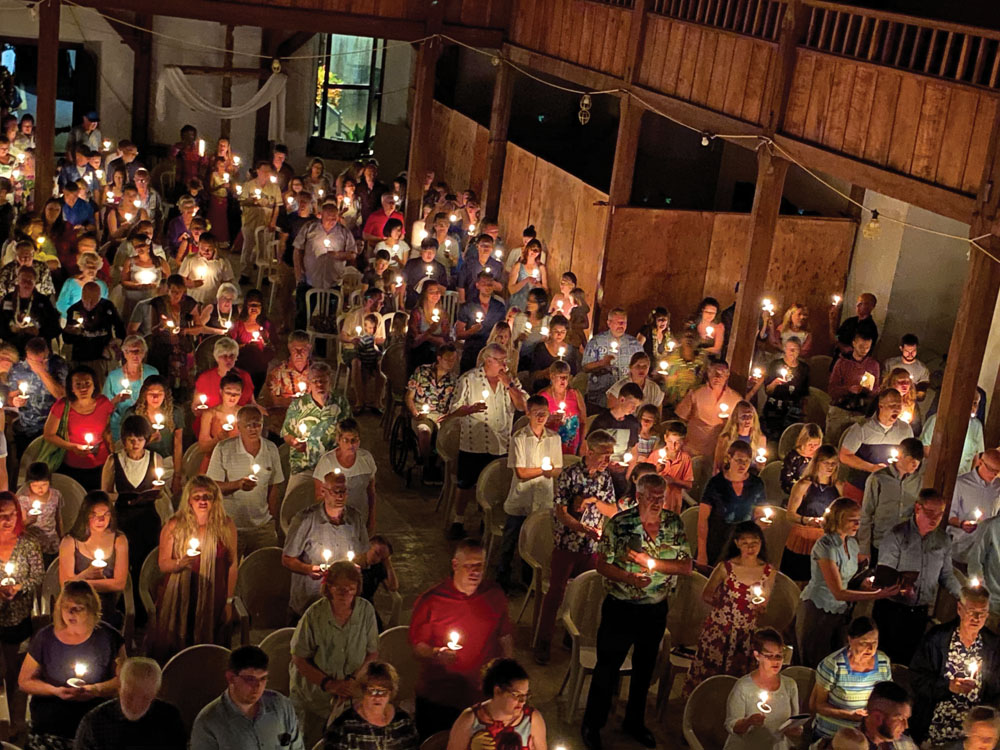
Prayers continued to be answered in the form of unexpected visits. Kahu simply describes these occurances as “miracles that needed to happen.”
One of them brought Peter T. Young, former Hawai‘i County deputy managing director, to the church when the project was “stuck.”
“Our preservation plan wasnʻt fitting into any of the county’s permit categories,” Kahu explains. “Then Peter knocks on my door, saying he was driving by, saw the church steeple and felt like God was telling him to come and talk to me. He asked me, ‘What do you need?ʻ”
After Kahu relayed the permitting challenge, Peter successfully volunteered to guide the church through the process.
“Another miracle is when Alan Quesnel of Canada shows up,” continues Kahu. “He told me he liked Sunday’s message and wanted to be part of the church. He said he was a philanthropist and wanted to offer a $450,000 matching grant—and then increased his donation to $3 million more!” Another unexpected donation of $250,000 came in from global real estate investor Kennedy Wilson, thanks to the efforts of project contractor Nathan Hendricks of Ali‘i Builders.
Capital Campaign, Grants Raise Funds
Church member Tricia Muramoto volunteered to help spearhead fundraising and the “Campaign of Spiritual Renewal” was launched in early 2016, chaired by Reggie Lee.
In addition to the previously mentioned monies raised, the project received a $250,000 grant from the National Fund for Sacred Places, a historic preservation grant-making program. The fund is a collaboration with Partners for Sacred Places and the National Trust for Historic Preservation to help churches best use their historic facilities to strengthen the community. In 2017, Partners for Sacred Places determined Mokuaikaua’s Economic “Halo Effect” totaled more than $3.3 million with the church’s Sunday services, counseling, and ministries.
Construction Enhances Structural Integrity
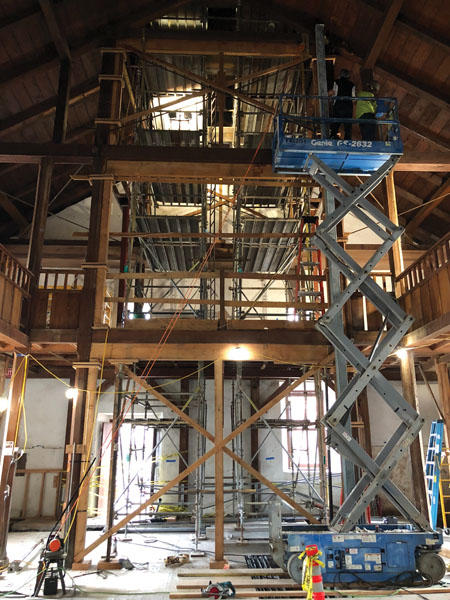
Kahu says the church’s vision for the project was to keep the building historically intact while making it structurally sound. Construction began in April 2019. Work included strengthening the entire structural system from the floor up to reduce stresses in the original stone masonry walls, installing large steel beams for stability, replacing ‘ōhi‘a posts and beams damaged by rot or termites, conserving plaster walls, replacing electrical wiring, and preserving the steeple.
Kahu adds, “We redid the roof and finally attached it to the walls with brackets. We straightened the walls, reinforcing them and the mezzanine. We built a new stage for our organ and piano. We restored our old bell to have a functioning bell—we had to take it apart, have some parts remade and then reassemble them. Steel beams were covered with ‘ōhi‘a to make it beautiful. So it’s not exactly like it was before, but it is as much as possible.”
Kahu credits the detailed preservation efforts of architect Glenn Mason, whose firm is known for its restoration work and research on historic Hawai‘i buildings, as an invaluable contributor to the project. Another important supporter has been the Historic Hawai‘i Foundation, which provided $75,000 towards restoration of the iconic steeple.
Project pieces still in the works at this writing include strengthening the steeple with steel, increasing the width of the front gates to accommodate a fire truck, and cosmetic work around the property. Kahu estimates $1.5 million is needed to complete the project. The church continues to accept project donations, which can be made via the church’s website.
Church Open to the Public for Services
The weekly service is Sundays at 9am, which is also streamed online and via the church’s Facebook page. The annual Christmas Eve service, a popular community event, is planned for 8–9pm with outside caroling beforehand by the front arch. ❖
For more information:
mokuaikaua.com
facebook.com/mokuaikaua.church
Mahalo Coldwell Banker Island Properties, our home/building story sponsor.
